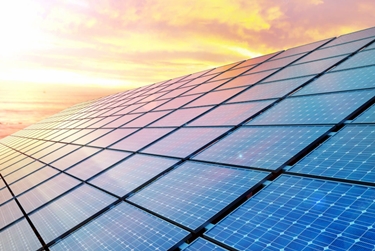
Boriy Alikhanov and Narimon Umarov, deputies of the Legislative Chamber Oliy Majlis of the Republic of Uzbekistan.
Today, many countries are radically revising their policies in the transition from the traditional model, in which environmental protection is considered a burden on the economy, to an engine of sustainable environmental development – a green alternative.
According to available data, 34 billion tons of carbon dioxide are emitted into the atmosphere annually, while the total volume of greenhouse gas emissions is 41 billion tons. These figures have increased by 3.8 times compared to the period of the 1950s. Moreover, the limited and declining resources of hydrocarbon energy sources bring to the agenda the adoption of measures to develop alternative energy, which is an urgent and relevant task. In this context, the widespread introduction of renewable energy sources in the world is rapidly developing. The total installed capacity of devices using renewable energy sources in 2022 amounted to 3,372 gigawatts, by 2023 – 3,700 GW. In particular, the capacity of hydroelectric power plants increased by 21 GW, wind energy – by 75 GW, solar energy – by 191 GW, bioenergy – by 7.6 GW and geothermal energy – by 181 MW.
As of the end of 2024, the total capacity of devices using renewable energy sources in the world is 4,600 GW. Last year, China achieved record figures in this direction, increasing solar power capacity by 18 percent, and wind power by 45 percent.
Today, as the demand for energy grows, many developed countries (USA, Japan, China, Great Britain and a number of European countries) are experiencing energy shortages.
Uzbekistan generates 81 billion kilowatts of electricity per year. Taking into account the rapid economic growth (GDP by 5-6 percent on average) and the population increase by 700-800 thousand people annually, the demand for energy also grows proportionally. According to our calculations, by 2030 the demand for energy will reach at least 125-130 billion kilowatts per year. In such conditions, within the framework of reforms in the field of state and public construction, which are consistently and gradually carried out in Uzbekistan, goals are put forward aimed at an accelerated transition to a green economy and the effective achievement of the Sustainable Development Goals (SDGs).
The development of renewable energy sources plays a key role in the energy sector of Uzbekistan. After all, our country has unprecedented natural reserves. Therefore, large-scale work is being carried out in the republic to introduce renewable energy sources. A legal framework has been created in the field of alternative energy. In 2019, the law “On the use of renewable energy sources”, important and conceptual decrees and resolutions of the President of the country were adopted.
As a result of systematic activities, by 2024 the total capacity of renewable energy sources in the republic reached 4,500 MW, and their share in the total volume of the energy sector was 16 percent. Last year alone, almost a billion cubic meters of natural gas were saved due to renewable energy sources, and 1.4 million tons of greenhouse gases were prevented from being released into the atmosphere.
According to the Strategy “Uzbekistan – 2030”, the country plans to increase the share of renewable energy sources to 40 percent of the total volume of electricity production by 2030. At the same time, the following measures should be implemented to ensure energy security:
- further diversification of the energy sector;
- the introduction of new types of advanced alternative energy, including the widespread use of efficient and environmentally friendly hydrogen fuel (the advantage of hydrogen as a fuel is that when it is burned, not only environmentally friendly water vapor is formed, but also the energy reserve is higher than that of organic fuels; when a ton of hydrogen is burned, as much heat is released as when 3.5 tons of organic fuel are burned);
- certain facilities must be transferred to an autonomous (local) power supply system, since its losses when supplying electricity over long distances amount to an average of 18 percent;
- extensive localization of production of solar panels and wind generators;
- accelerated progress in research and development to improve the efficiency of using renewable energy sources;
- organization of a large-scale installation of solar collectors (vacuum collectors are suitable for our climate conditions) for heating premises and obtaining hot water;
- inventory of high-energy-intensive technologies, since we spend 2-3 times more energy per unit of production than in developed countries;
- increasing the efficiency of technologies for the use of landfill gas obtained from waste;
- the formation of a culture of rational consumption of electrical and thermal energy among the population.
It is important that people believe in the results of reforms in the energy sector. At the same time, it is necessary to form in society and the state a responsible attitude to the consumption of natural resources, the quantity of which is limited, to their careful use.
We must not forget the simple fact that wasted energy leads to a deficit somewhere. /// nCa, 26 March 2025 (in cooperation with Embassy of Uzbekistan in Turkmenistan)













Leave a Reply